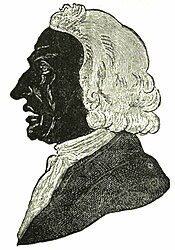and bow, enabling him to overcome the greatest difficulties with complete ease; perfect intonation in double-stops, and a most brilliant shake and double-shake, which he executed equally well with all fingers. That the composer of the 'Trillo del Diavolo,' and many other fine and noble pieces, could not have played but with the deepest feeling and most consummate taste, it is almost superfluous to say. Indeed we have his own testimony, when Campagnoli in his Violin-School reports him as having remarked upon a brilliant virtuoso: 'That is beautiful! That is difficult! but here (pointing to the heart) he has said nothing to me.' At the same time it ought to be mentioned that Quanz (see that article), who heard him at Prague, and who certainly was no mean authority, while granting his eminence as a player generally, adds: 'his manner was cold, his taste wanting in noblesse and in the true style of singing.' Whatever the reason of this strange criticism may have been, to our mind it stands condemned by the deeply emotional and pathetic character of Tartini's compositions, and the want of taste we presume to have been on the side of the critic rather than of the artist. Quanz also states, that he was fond of playing in extreme positions, a statement which is difficult to understand, because in his works we very rarely find him exceeding the compass of the third position. But if it is to be understood that Tartini, in order to continue the same musical phrase on the same string, frequently used the higher positions for passages which, as far as the mere mechanical production of the sounds was concerned, he might have played in lower ones, Quanz's criticism would imply that Tartini used one of the most important and effective means for good musical phrasing and cantabile playing, in doing which he was anticipating the method by which the great masters of the Paris School, and above all Spohr, succeeded in making the violin the 'singing instrument' par excellence. That Tartini should ever have condescended to astonish his audiences by the execution of mechanical tricks after the fashion of a Locatelli (see that article), appears, from the character of all his known compositions, morally impossible. Both as player and composer he was the true successor of Corelli, representing in both respects the next step in the development of the art. But there is an undeniable difference of character and talent between the two great masters. They are striking instances of the two main types of the Italian artist, which can be distinguished from the oldest times down to our days. The one, to which Corelli belongs, gifted with an unerring sense of artistic propriety and technical perfection, the strongest feeling for beauty of form and sound—with pathos, dignity and gracefulness their chief means of expression; the other, of which Tartini was a representative, while sharing all the great qualities of the former, adds to them that southern fire of passionate emotion which carries everything before it. In technique Tartini represents a considerable progress upon Corelli by his introduction of a great variety of bowing, which again was only possible by the use of a longer and elastic bow. [See Bow; and Tourte.] His work, 'Arte dell' Arco,' 'L'art de l'archet'—a set of studies in the form of 50 Variations[1] gives a good idea not only of his manner of bowing, but also of his left-hand technique. In respect of the latter the advance upon Corelli is still more striking. Double stops of all kinds, shakes, and double shakes are of frequent occurrence. We remember how Corelli (see that article) was puzzled by the difficulty of a passage in an overture of Handel's. That could certainly not have happened with Tartini. In some of his works there are passages which, even to the highly developed technique of the present day afford no inconsiderable difficulty. We will mention only the famous shake-passage in the 'Trillo.' But at the same time he shows his appreciation of purity of style by the absence of mere show-difficulties, which he certainly was quite capable of executing.
How great he was as a teacher is proved by the large number of excellent pupils he formed. The most eminent are Nardini, Bini, Manfredi, Ferrari, Graun, and Lahoussaye. Some of these have borne most enthusiastic testimony to his rare merits and powers as a teacher, to his unremitting zeal and personal devotion to his scholars, many of whom were linked to him by bonds of intimate friendship to his life's end. Of the pre-eminently methodical and systematic style of his teaching, we gain an idea from a most interesting letter, addressed by him to his pupil Maddalena Lombardini-Sirmen, and from his pamphlet 'Trattato delle appogiature.' [See Violin-playing.] The following characteristic head is reproduced from a drawing in possession of Julian Marshall, Esq.

As a composer, not less than as a player, he stands on the shoulders of the greatest of his predecessors, Corelli. He on the whole adopts the concise and logical forms of that great master and of Vivaldi (see that article); but in his hands the forms appear less rigid, and gain ampler and freer proportions; the melodies are broader, the phrases more fully developed; the harmonies and
- ↑ Recently republished by Ferd. David. Offenbach, André.
